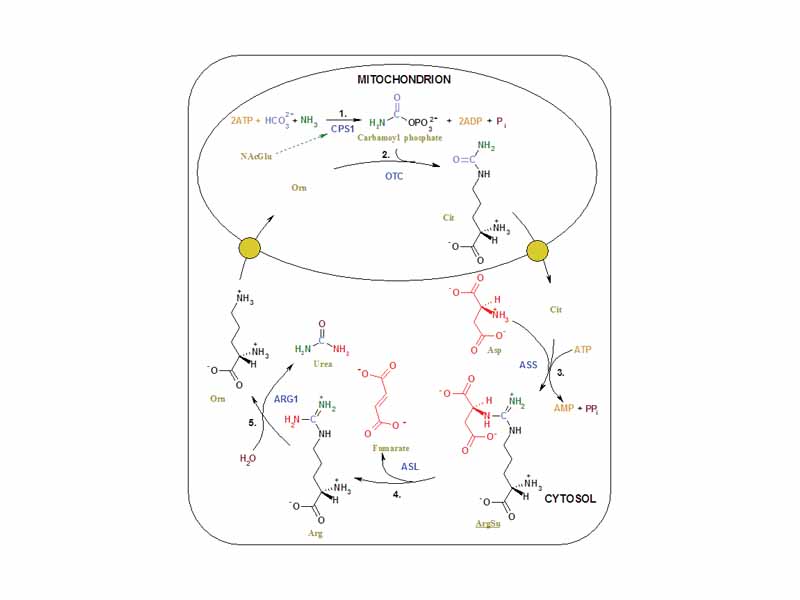Interdisciplinary Note (5 of 5)
Amino acids not used in biosynthesis are not stored, but are used as fuel. Most frequently, the α-amine group is removed and converted to urea while the carbon skeleton is converted into acetyl CoA, pyruvate, or an intermediate in the citric acid cycle. In other words, surplus amino acids may be used for fuel or they can be converted into fatty acids, glucose, or some other product of metabolism. A simple set of examples involves the process of removing the amine group, the amino acid is converted into the corresponding α-keto acid by a particular aminotransferase. For example, substituting a carbonyl group for the amine group of alanine yields pyruvate, and substituting a carbonyl group for the amine group of aspartate yields oxaloacetate. The amine group enters the urea cycle in mammals for conversion to urea, while the carbon skeleton is converted to either pyruvate, acetyl CoA, acetoacetyl CoA, α-ketoglutarate, succinyl CoA, fumarate, or oxaloacetate, depending on the amino acid.
